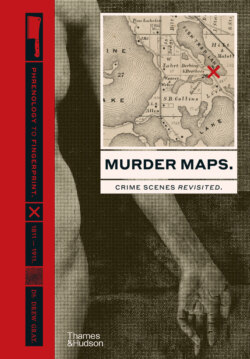Читать книгу Murder Maps - Drew Gray - Страница 39
Оглавление38
PART ONE — EUROPE.
market. Her throat had been cut but the killer had been disturbed and fled before he could mutilate her. Since that was his intention, he struck again, this time in the City of London at Mitre Square. Catherine ‘Kate’ Eddowes’s (1842–88) body was horribly brutalized: her uterus and left kidney removed, and her face cut up. Three men leaving a Jewish club near Mitre Square that night had seen Kate talking to a man. Descriptions were given and hundreds of potential suspects interviewed, but no arrests were made. More letters arrived on the detectives’ desks and one, sent to the chair of the local Whitechapel Vigilance Committee, George Lusk (1839–1919), came accompanied by a portion of human kidney that the anonymous sender claimed he had cut from Eddowes’s dead body.
For a while, the murders ceased, possibly because the killer was aware that the police were closing in, or perhaps because he was sated by the ‘double event’ that raised the levels of terror in the capital. Then, in the early hours before the Lord Mayor’s Show, he struck again. His final
canonical victim was Mary Jane Kelly (1863–88), whose eviscerated body was found on 9 November at her digs in Miller’s Court, Dorset Street. So terrible were her injuries that her lover was only able to identify her by her ‘eyes and ears’. At least two other women may have met their end at the hands of Jack: Alice McKenzie (1849–89) killed in Castle Alley in July 1889 and Frances Coles (1859–91) murdered in Chamber Street in February 1891.
The investigation into the killings was conducted by the Criminal Investigation Department that had been setup just ten years previously. However, due to both internal incompetencies and external complications, they were never able to get one step ahead of the killer. The practice of crime scene investigation was still in its infancy, and for the early murders there was virtually no attempt at a systematic, detailed analysis of where the bodies were discovered. The possibility of achieving this was undoubtedly undermined by the press, who trampled all over the crime scenes and interviewed witnesses with
Above. illustrated police news, 22 september 1888, coverage of annie chapman’s murder and the heightened tension the ‘ripper’ murders were causing in the east end
of london in 1888.
Above. illustrated police news, 15 september 1888, coverage of the murder of annie chapman in hanbury street, off brick lane, and the link between this case
and mary ann nichols’s killing eight days earlier.
